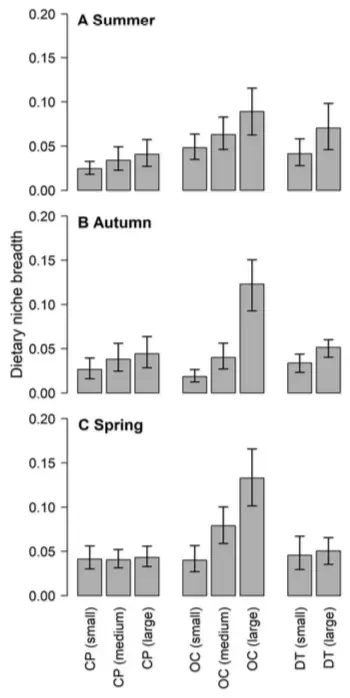Temporal shifts in intraspecific and interspecific diet variation among 3 stream predators

Abstract
Intraspecific variation is increasingly recognized as an important factor in ecological interactions that can exceed the role of interspecific variation. Few studies, however, have examined how variation in intra- and interspecific resource use affect trophic interactions over time within a seasonally-dynamic food web. We compared diets with respect to predator body size and predator species identity over 3 seasons by collecting stomach contents from 2028 Reticulate Sculpin (Cottus perplexus), 479 Coastal Cutthroat Trout (Oncorhynchus clarkii clarkii), and 107 Pacific Giant Salamanders (Dicamptodon tenebrosus) in western Oregon streams. In each season, predator body size was strongly associated with dietary composition and positively related to taxonomic breadth and the size of individual prey. Intra- and interspecific diet variation changed substantially across seasons, with much greater interspecific variation in spring than in summer and autumn. Interspecific differences in foraging mode (e.g., benthic vs drift feeding) were associated with predator-specific responses to a seasonal pulse in the availability of terrestrial thrip larvae (Thysanoptera) and contributed to temporal variation in trophic niche differentiation. These findings show that the relative magnitudes of intra- and interspecific diet differentiation can change over time in systems that receive seasonal resource pulses. Our results highlight the dynamic nature of food webs and the need to incorporate sampling over relevant temporal scales to understand species interactions.